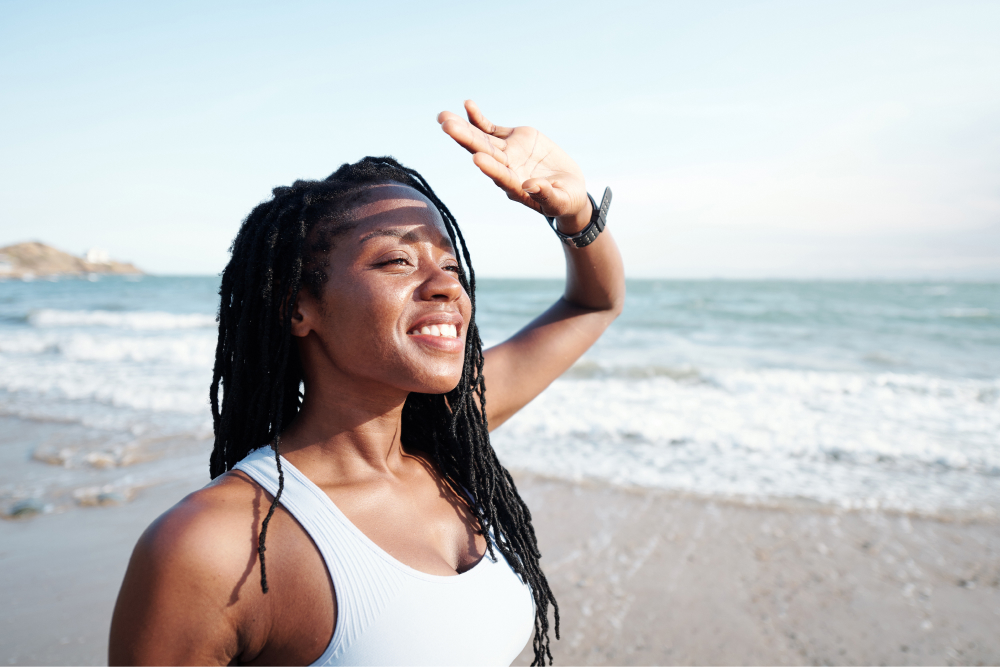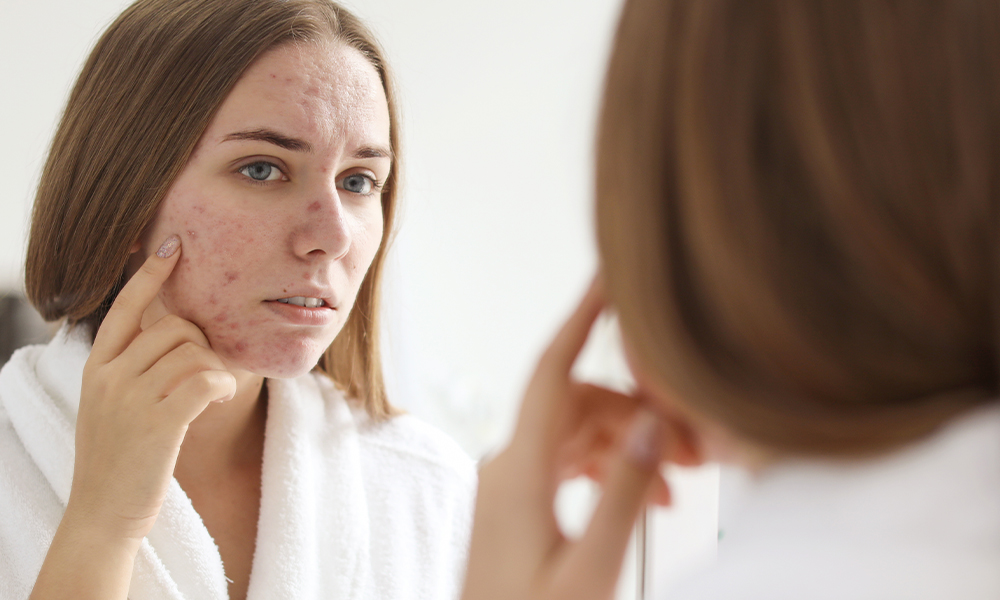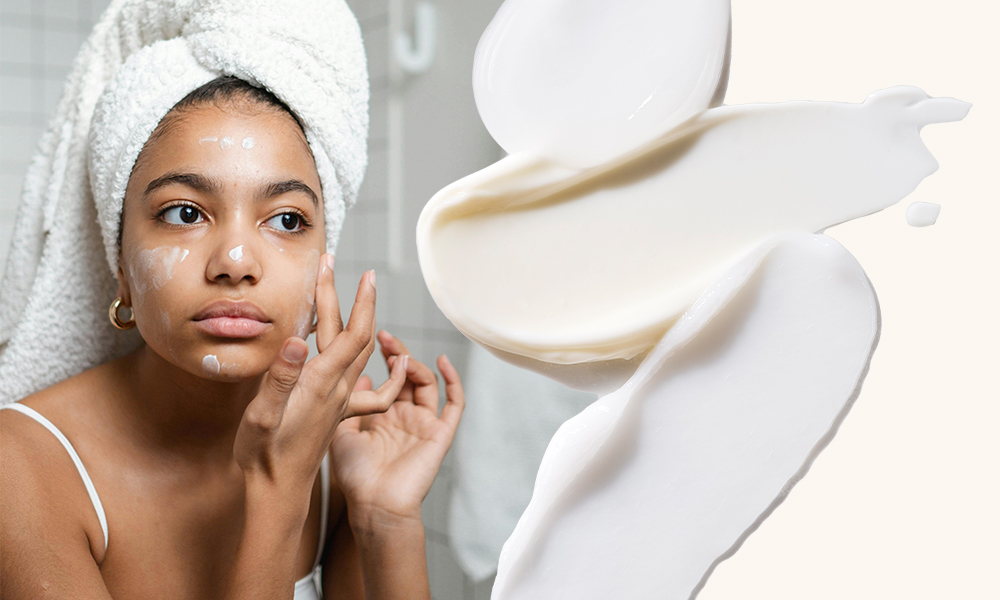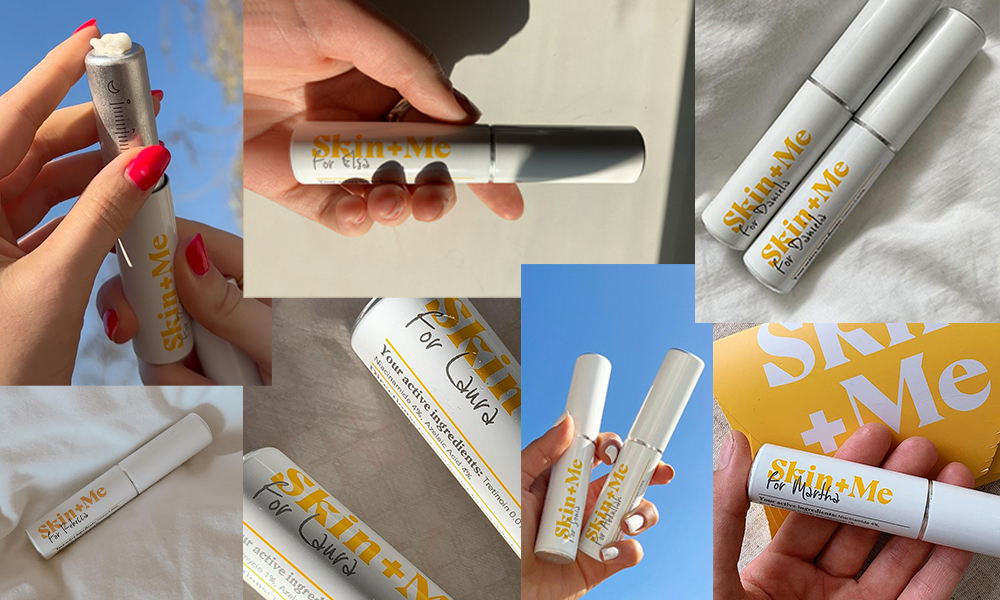Ask A Dermatologist: Do I Have Acne Or Rosacea?

Link to share article here:
Myth Buster: The Truth About Sunscreen. Plus, Do SPF Tablets and Aftersun Work?
Let’s get this straight. Sunscreen is the Dermatologist’s non-negotiable but there are a myriad of different choices you can make when it comes to applying it – and some are more effective than others.
We checked in with our Head of Medical, Dr Jason Thomson to get to the truth behind common sunscreen myths. While we were at it, we got the intel on full-body sun protection, whether we should buy aftersun, and his take on whether SPF tablets are genuinely worth the hype.
Think of this as your full-body sun protection special. Let’s start with the application.
Skin + Me: Where should we apply body sunscreen? Ideally all over obviously, but what are the key areas on the body to do first and the areas not to miss?
Dr Jason Thomson: The sun’s UV rays are the main cause of skin cancer and premature ageing and sunscreen is a key tool in our armoury for protecting our skin. Applying sunscreen is really about protecting all of your exposed skin and the order you apply doesn’t make a difference.
Some areas are commonly missed when applying sunscreen – the back is often missed, unsurprisingly, as you’ll usually need an extra person to help you reach this area and men, in particular, are at an increased risk of developing melanoma on their backs. The back of the neck, scalp (if you have a bald spot or shave your hair), hands and feet (soles in particular) are also often missed so make sure you pay attention to these areas.
People often don’t think about their lips but they get a lot of sun exposure, particularly your bottom lip where we frequently see skin cancers develop so it’s important to wear a sunscreen lip balm when out in strong sunlight. The eyelids are another area that is often forgotten which is understandable as this is the thinnest and most sensitive skin on the body and can be easily irritated – wearing UV protective sunglasses will give good protection.
Most people don’t apply enough sunscreen to get anywhere near the SPF advertised on the bottle with studies showing that most of us apply less than half of the required amount. For a lotion, 36g or 6 teaspoons of sunscreen is needed for an average-sized adult.
“Most people don’t apply enough sunscreen to get anywhere near the SPF advertised on the bottle.”
Dermatologists will generally recommend using a broad-spectrum sunscreen (which means it protects against UVA and UVB rays) with at least SPF 30.
Skin + Me: How often and when should I apply body sunscreen?
Dr Jason Thomson: Remember the sun is at its strongest between 11am and 3pm when it’s sunny which is why we recommend seeking shade during these times if you can. Winter sunlight can be strong, particularly when at altitude and near reflective surfaces such as snow so you should protect exposed skin in these situations too.
You should apply your sunscreen generously to all exposed skin, around 20 minutes before going out into the sun. It’s also recommended to reapply your sunscreen around 15 to 30 minutes after sun exposure begins. This is to help cover any patches you may have missed and to account for the fact most people don’t put on enough sunscreen in the first place. You should reapply your sunscreen every couple of hours and after swimming, vigorous exercise, sweating and towelling. Even if your sunscreen says water-resistant, towelling has been shown to get rid of most of the sunscreen so it’s safest to reapply.
Sunscreen is only one tool in your armoury against the sun’s damaging rays and no sunscreen is 100% effective. Good sun behaviour also includes wearing protective clothing, and sunglasses and seeking shade between 11am and 3pm.
Skin + Me: If I do get burnt, should I use an aftersun? Do I apply sunscreen on top of aftersun?
Dr Jason Thomson: The key is not to get burnt! Even a tan without burning is your skin telling you that it’s been damaged by the sun’s rays. If you do get burnt by the sun then products like aftersun can help improve the symptoms of redness and soreness. They’ll usually contain moisturising ingredients and soothing ingredients such as aloe vera that can make the skin more comfortable and cool. Sunburnt skin shouldn’t be exposed to the sun until it’s fully healed so if on holiday and you get burnt it’s best to avoid the sun and seek shade or cover up with clothing until your skin has settled back down. It’s also advisable to drink lots of water and take pain relief (such as paracetamol).
“Even a tan without burning is your skin telling you that it’s been damaged by the sun’s rays.”
Although the symptoms of sunburn are temporary, lasting damage remains as your skin cells’ DNA is damaged and it’s the leading contributor to skin cancers which can be deadly. To stress the point about not getting burnt, a study showed that people that experienced just five blistering sunburns had an 80% increased chance of getting melanoma, the deadliest form of skin cancer.
Skin + Me: SPF tablets: Do they work? Can I use them instead of topical sunscreen?
Dr Jason Thomson: The concept of SPF tablets, or ‘oral photoprotection’, has gained a lot of interest over the past few years and increasing amounts of research is happening in this field.
Essentially, they’re antioxidant supplements that work in a completely different way to sunscreens by protecting your skin from the downstream effects of the sun’s UV rays – by inhibiting the formation of harmful molecules (called reactive oxygen species) and protecting the skin’s DNA. Polypodium leucotomos extract (which is found in a fern plant from Central and South America) is one of the most promising ingredients and it’s been shown in clinical trials to protect the skin against UV damage.
These supplements can be a good additional sun protection measure and should always be used alongside other good sun protection measures such as sunscreen and sun-protective clothing – they shouldn’t be relied on for adequate sun protection alone.
Common sunscreen myths
Myth: Sunscreen makes oily skin worse.
Truth: Not all sunscreens will clog your pores. We designed the Skin + Me Daily Defence Oil Free SPF 50 Sunscreen to work for all skin types, so you don’t have to worry about greasy skin if you’re prone to acne. You can add Daily Defence to your next box of Skin + Me here.
Myth: Layering sunscreens makes them more effective. Two layers of SPF 15 equal SPF 30.
Truth: Layering sunscreens isn’t a problem in general but you should always use the highest SPF (SPF 30+) in a single product. If you then apply another product with added sun protection, that’s a bonus. Remember, two layers of SPF 15 still equal SPF 15.
Myth: You can skip sunscreen indoors or on cloudy days.
Truth: Cloudy days are deceptive when it comes to sun safety! Dermatologists recommend wearing sunscreen every day. The sun’s UV rays can cause skin damage even on days when the weather feels overcast, or if you’re sitting by a window. Cumulative sun damage on days when you skip sunscreen because ‘it’s not sunny enough’ can lead to accelerated skin-ageing, and hyperpigmentation and increase your risk of developing skin cancer.
Myth: Once in the morning sunscreen application is all you need.
Truth: No sunscreen is 100% effective. As mentioned, it’s recommended you reapply your sunscreen around 15 to 30 minutes after sun exposure begins. Reapply if you exercise outdoors or swim and splash in water. Make sure you apply generously. Cover up and stay out of direct sunlight when the sun is at its most powerful (between 11am and 3pm).
Myth: SPF 30 means I can spend an extra 30 minutes in the sun.
Truth: Wouldn’t it be lovely if it were as easy as this? The number on your sunscreen bottle refers to the Sun Protection Factor of the product inside, not the amount of time you can spend in the sun.
Myth: Darker skin tones don’t have to wear sunscreen because they have their natural sun protection.
Truth: This is a harmful suncare misconception. Darker skin tones have higher levels of melanin and may have a low natural level of protection against UV light, but not higher than SPF 13, so wearing SPF30+ is crucial every day. If you’re worried about sunscreen leaving a white cast on your skin, then look for a chemical sunscreen rather than a mineral ones. We designed Daily Defence Oil-free SPF 50 Sunscreen to dry clear within seconds, so it looks invisible on all skin tones. Find out more here, or add a tube to your next order.
Medical facts checked by Head of Medical, Dr Jason Thomson.
New to Skin + Me? Get your first month of personalised skincare for £4.99 with promo code DOSE – complete our quick consultation here.
Looking for a routine refresh? Add the Dream Routine to your Skin + Me subscription.
In need of a restock? Head to The Skincare Shop for one-off purchases of your Routine Essentials.



